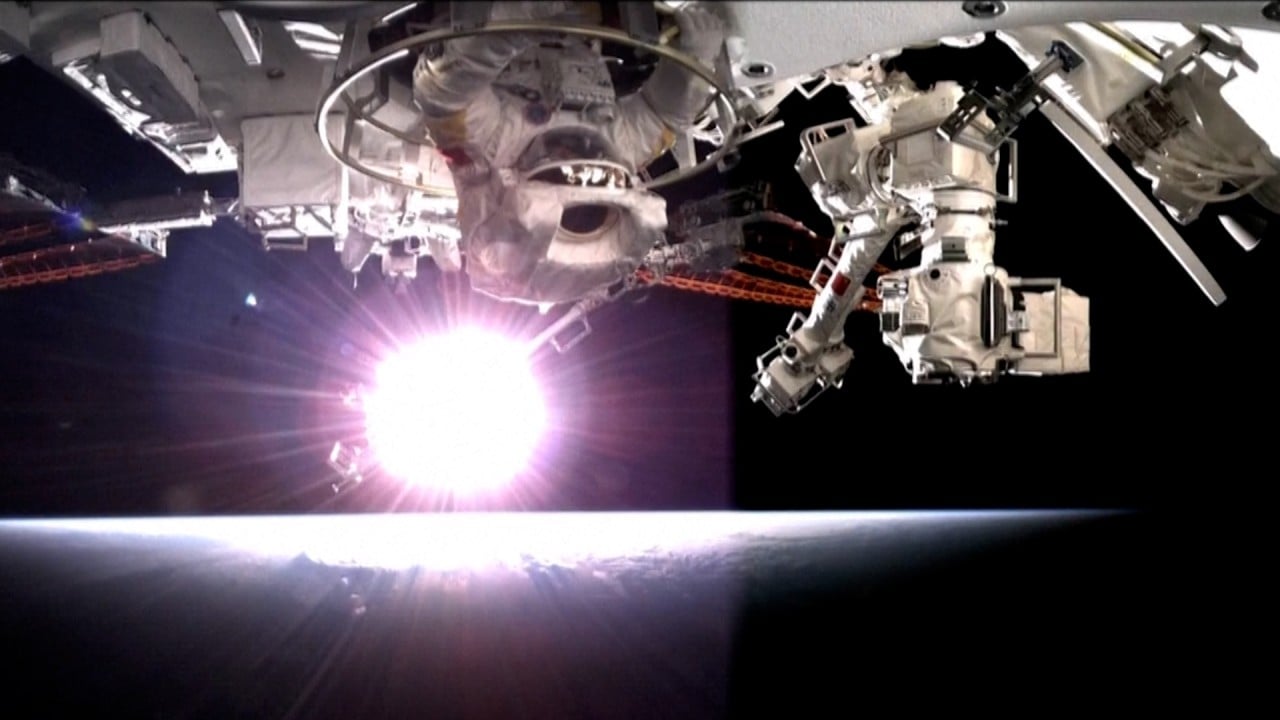
03:23
China to train international astronauts for future trips to space station

US technology transfer restrictions have grounded plans for the United Arab Emirates to take part in China’s Chang’e 7 mission to the moon in 2026, two sources have separately confirmed.
The collaboration would have seen the UAE’s Rashid 2 rover delivered to the moon’s surface in the unmanned mission to the lunar south pole, which is intended to lay the foundations for an international research station.
But the pact, signed between the two countries’ space agencies in September, has fallen foul of US legislation according to the sources, who asked for anonymity because of the issue’s sensitivity.
Both sources pointed to the 1976 International Traffic in Arms Regulations (ITAR), which bans even the most common US-built widget from being launched aboard Chinese rockets.
The Mohammed Bin Rashid Space Centre, which is developing the moon rover, has been contacted for comment.
John Logsdon, professor emeritus of space policy at George Washington University, said ITAR mainly consisted of a list of defence and military-related technologies that could not be exported without a licence from the State Department. “There are a few exceptions for close US allies,” he said.
Logsdon said the manufacturer of any US technology subject to ITAR incorporated into the Rashid 2 rover would need a licence for export to the UAE if the UAE-China collaboration were to happen.
“That licence – or another agreement – would have to describe a technology control approach that would prevent Chinese access to the technology, or the UAE would have to obtain permission to allow China access to the technology.”
Space programme historian Jonathan McDowell, an astronomer at Harvard University, said many components built in the US – or built in Europe with American sub-components – were subject to restrictions, partly aimed at stopping China from getting access to advanced technology.
“As far as I can tell, the worry is that when Rashid 2 arrives in Xichang for the launch on China’s rocket, Chinese engineers will sneak in one night and take it apart, study all the designs and put it back together before morning,” he said.
McDowell said the US had done just that, in the early days of the space race. The CIA briefly stole the Soviet Luna 3 moon probe while it was on display in Mexico, returning the spacecraft after partially dismantling and photographing its interior.
Critics have called for an overhaul of the ITAR restrictions, which they say are outdated and taking a toll on the US space industry. Some European companies are avoiding them with special product lines that use no American parts.
ITAR had also forced China to develop its own technologies, McDowell said.
“Now that China is a major space power, I suspect the long-term result – assuming the US does not change its attitude – will be more ITAR-free products developed in places like Europe and the UAE, and ultimately the rest of the world depending less on buying US space products.”
The UAE’s first moon rover Rashid was launched from Florida in December on a SpaceX Falcon 9 rocket. It has just arrived in the moon’s orbit and is expected to touch down on the lunar surface in April on board the Japanese Hakuto-R lander.
With Rashid 2 out of the Chang’e 7 mission, a 10kg (22lbs) slot for international payloads has reopened to the global research community.
The multi-spacecraft mission will include an orbiter, lander, rover, hopper and a relay satellite.
In all, Chang’e 7 will carry more than a dozen instruments that will be expected to operate for at least eight years and pave the way for construction of the China-led international lunar research station in the 2030s.